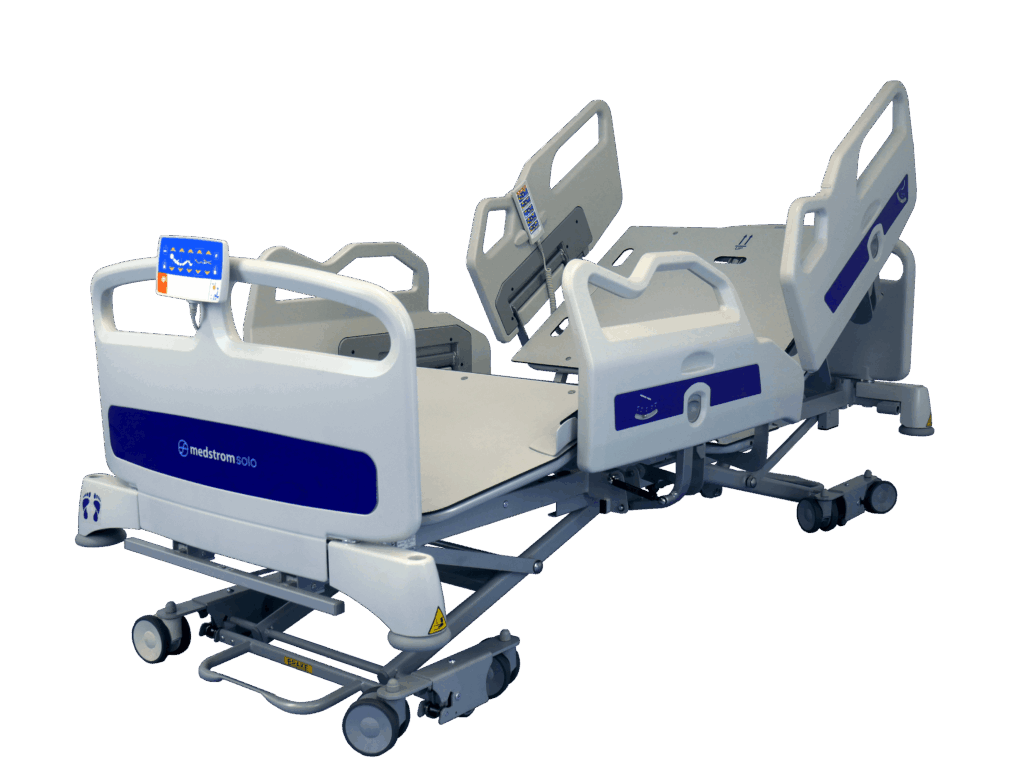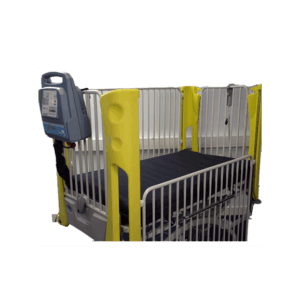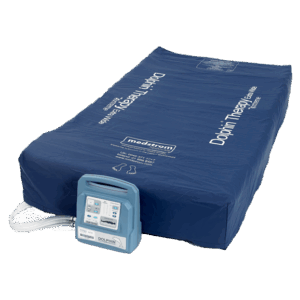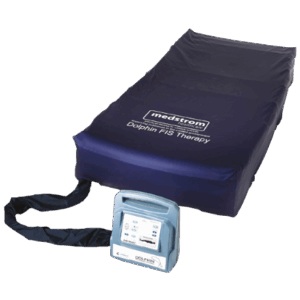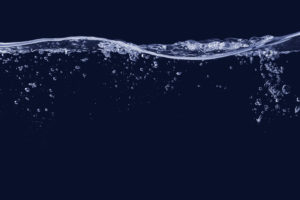
End of Life Care: Dolphin Therapy
In this post, I look at outcomes for patients receiving end of life care, nursed on Dolphin Therapy, from data collected between 2021 and 2023.
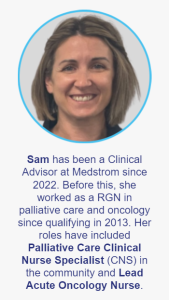 Introduction
Introduction
Many patients receiving end of life care need a support surface that can help to prevent skin breakdown and treat any existing damage. Sometimes, dynamic air mattresses are not able to achieve this. For example, a very unwell patient with multiple organ failure and peripheral shutdown may need a higher specification surface.
The Dolphin Therapy fluid immersion simulation surface is one of the only viable ‘step up’ options from a dynamic mattress. It provides true immersion and envelopment of the patient, which prevents tissue ischaemia, including when the wound is in direct contact with the surface.
Between 2015 and 2023, Medstrom collected outcome data from over 3,000 patients. This demonstrated outstanding results for pressure area care and other objectives including pain management, comfort, and sleep.
In 2021, we updated our Dolphin Therapy outcomes data collection form. As a result, we can now drill down into the data more and look at specific types of patients. From this data, I have summarised the outcomes for patients receiving end of life care from 2021 until the time of writing this post below.
Background Information
- Total of 223 patients receiving end of life care (male = 112, female = 111)
- Age range: 0 to 99 years old
- 88% had pressure ulcer risk scores of high or very high
Prevention Versus Treatment
At the time patients are placed on Dolphin Therapy, they fall into one of two groups:
- Prevention: No existing skin damage
- Treatment: Existing skin damage
Of the 223 patients, 54 (24%) were in the prevention group, and 169 (76%) were in the treatment group.
Prevention Outcomes
None of the 54 patients placed on Dolphin Therapy for prevention developed skin damage.
Treatment Outcomes
The 169 patients who used Dolphin Therapy for treatment purposes had 309 areas of skin damage in total at the time of placement. This shows that some had multiple areas of damage. For reference, the categories and numbers are below:
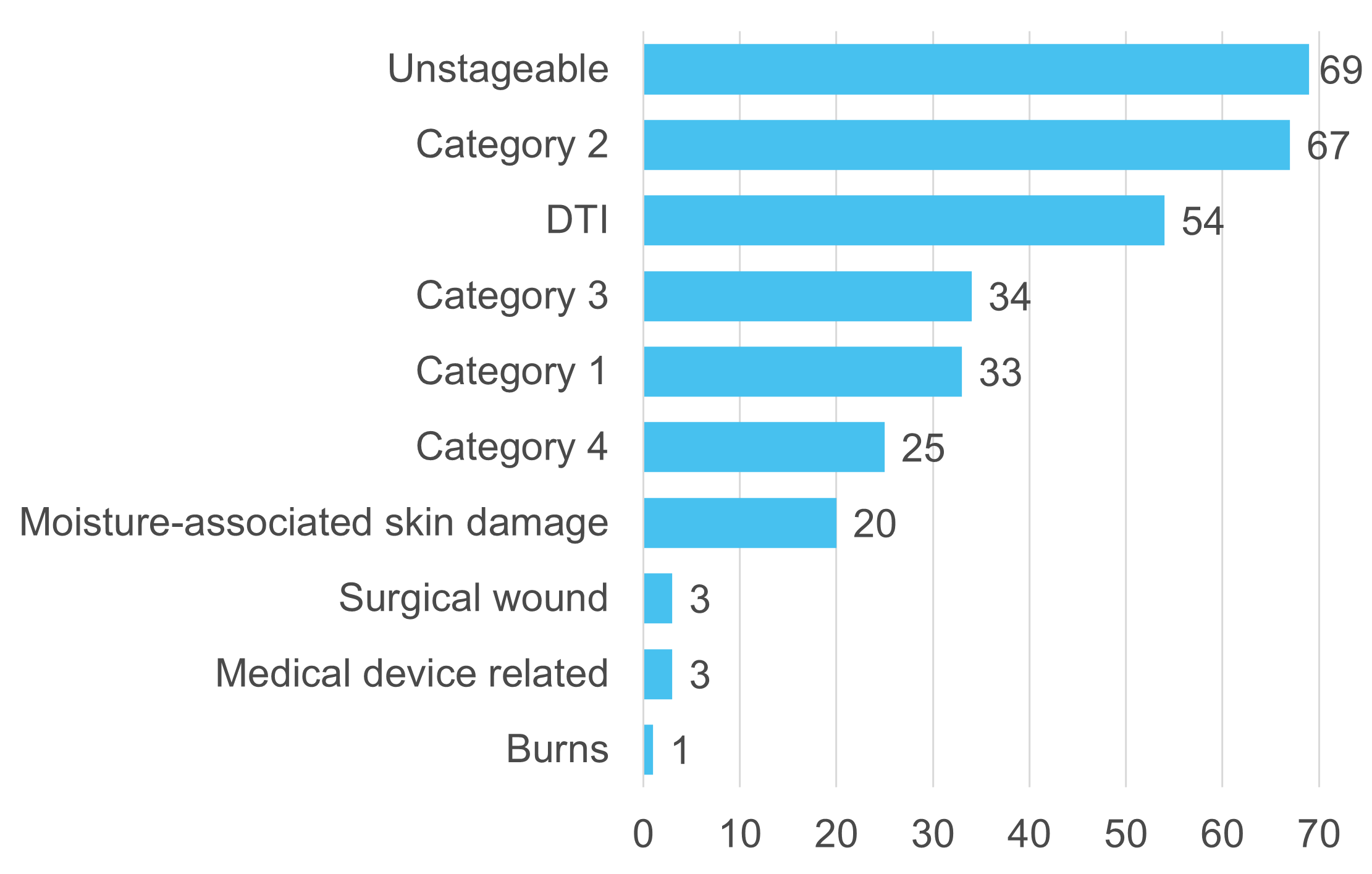
Final Treatment Outcomes
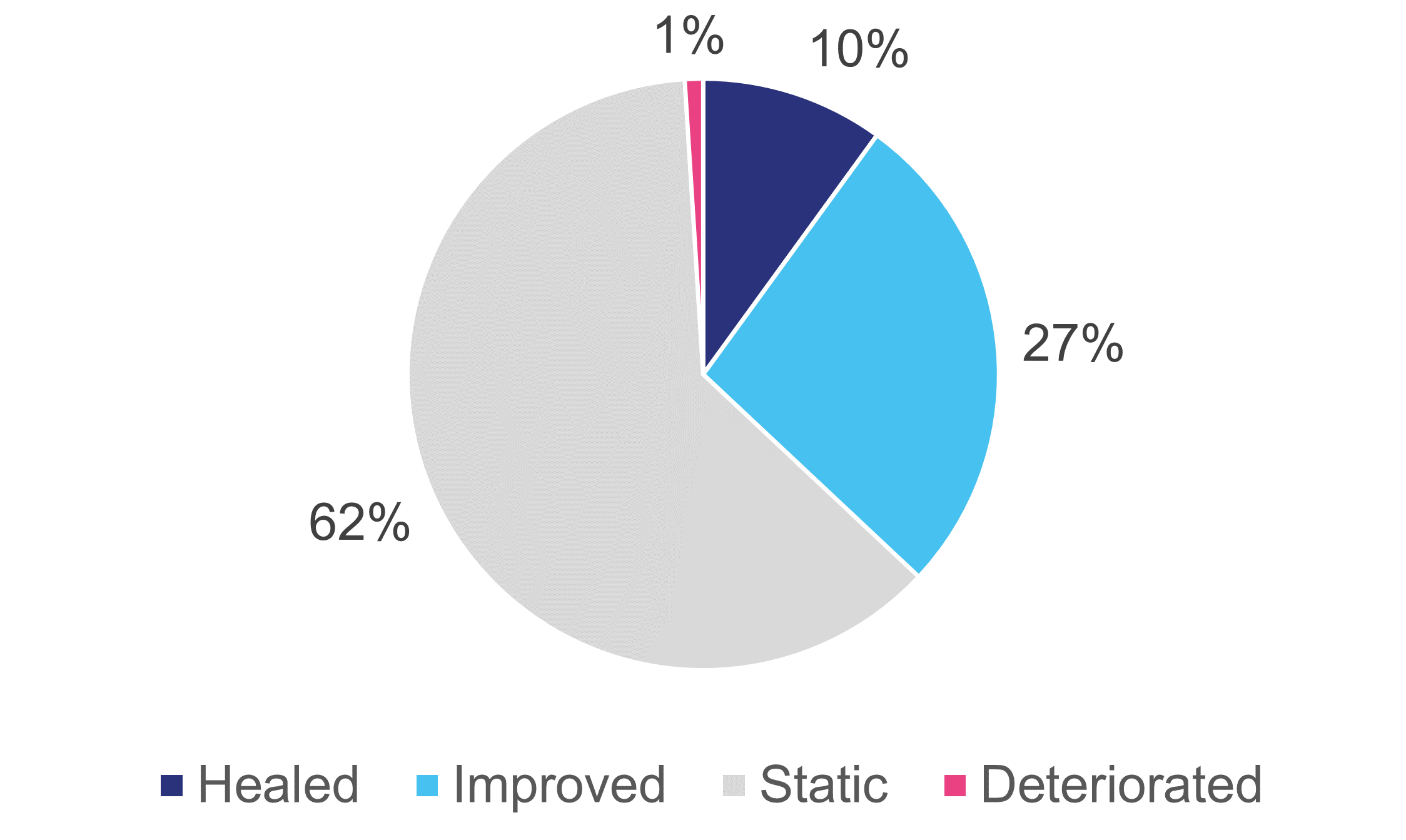
At the end of Dolphin Therapy placement, 37% of wounds (113) had healed or improved.
Additionally, 62% (192) had remained static, and 1% (4) had deteriorated.
Nursed Directly on the Wound
A total of 262 of the 309 areas of skin damage (85%) were nursed directly on the wound.
Of these, 36% healed or improved.
Other Outcomes
Comfort, sleep and pain management improvement: These objectives were fully or partially met for 100% of patients.
Reduced turning frequency: Of the patients who had this as an objective, it was fully or partially met for 98%.
Improved adherence to care: Where this was an objective, it was fully or partially met for 96% of patients.
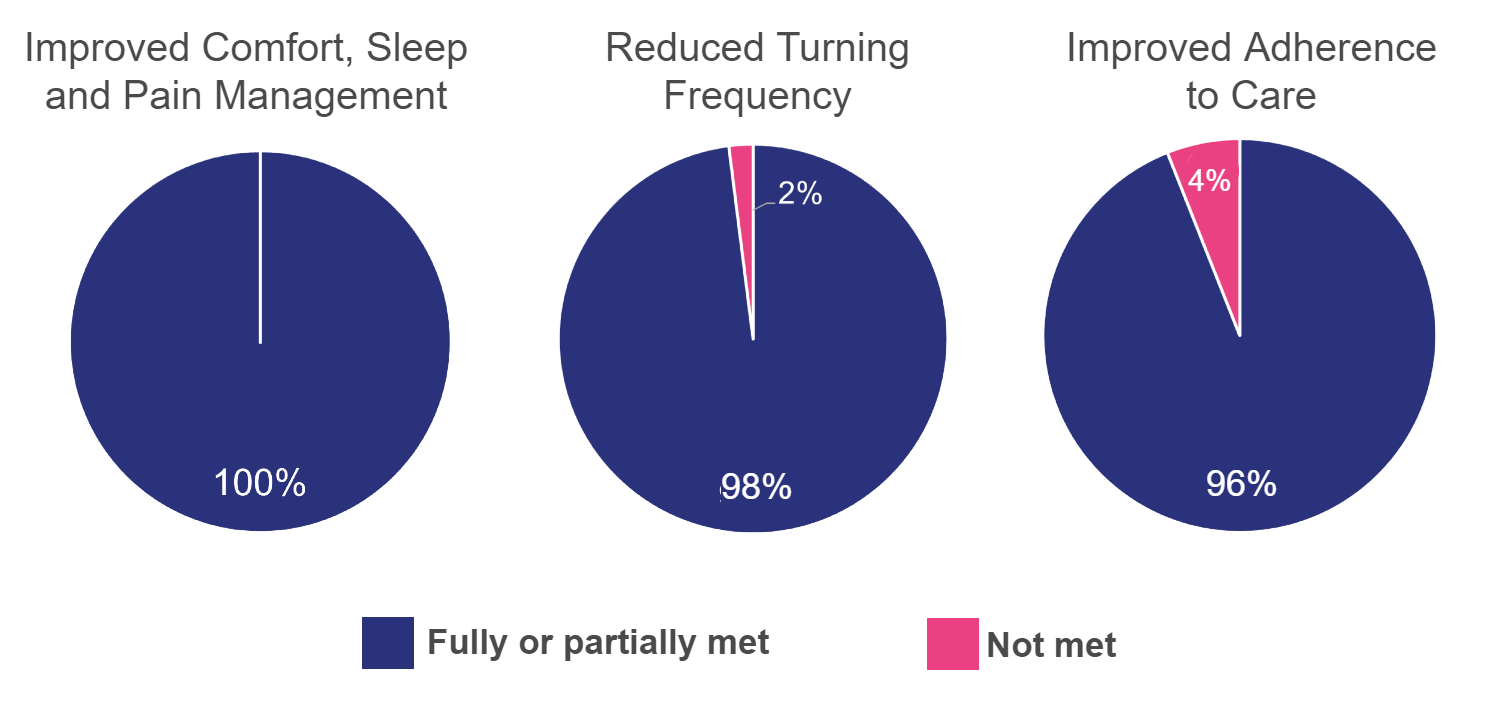
Discussion
Given how unwell this group of patients would have been, the outcomes are outstanding. The fact that no patients placed on Dolphin Therapy for prevention purposes developed any skin damage is an excellent achievement.
In the treatment patients, 37% of wounds healed or improved, and 62% remained static. Notably, for wounds in direct contact with the surface, 36% healed or improved. These very similar percentages provide further evidence that wounds heal and improve when in direct contact with the Dolphin Therapy surface.
These numbers differ from the whole 3,000+ outcomes, where 58% healed or improved and 39% remained static. However, the reason for this difference is likely to be because the patients at end of life were among the most vulnerable and unwell of the entire patient population with recorded outcomes. Multiple organ failure, including skin, means wound healing is more difficult. But the outcomes for patients receiving end of life care are still excellent, with only 1% of wounds deteriorating. Where this happened, the notes stated the following:
- Patient deteriorated overall
- Chronic disease process
- Insufficient blood supply
- Maceration and necrosis, unable to debride
Whilst it is impossible to prevent all skin damage or deterioration, Dolphin Therapy achieves this in a very high percentage of patients.
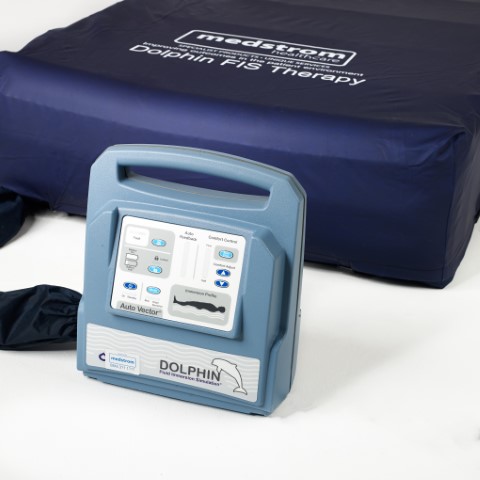
Other Outcomes
The other outcomes are also outstanding and in line with those from the full 3,000+ outcomes. The importance of a reducing pain, and improving comfort and sleep for a patient at the end of their life cannot be overstated. And if this can be achieved using equipment and reducing polypharmacy, so much the better, In addition, the fact that all of the patients who had these as objectives achieved them is noteworthy.
Reducing turning frequency can contribute to comfort, pain management and sleep improvements. As a result, loved ones may feel less anxious, knowing the patient is more settled for longer periods of time.
Improved adherence to care can also reduce pain and increase comfort and sleep. A person who is adherent to care is likely to feel less distressed and anxious than someone who isn’t. Again, this contributes to their overall wellbeing, and that of their loved ones.
Conclusion
As we continue to collect outcome data for Dolphin Therapy patients, we can build a fuller picture with greater numbers. I was particularly interested to look at outcomes for patients receiving end of life care because of my palliative care background. I had seen the 3,000+ outcomes data, but was honestly expecting that outcomes would be worse for patients having end of life care. The fact that they weren’t is a testament to how effective Dolphin Therapy is.





